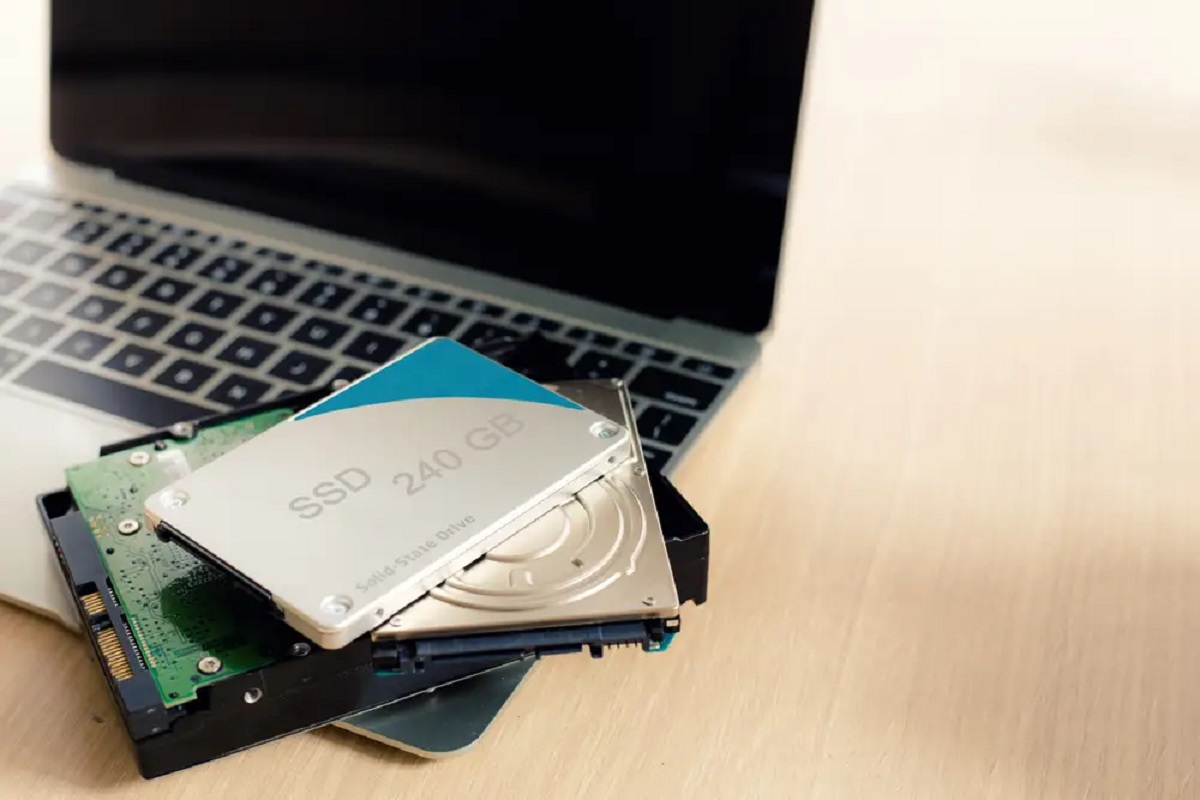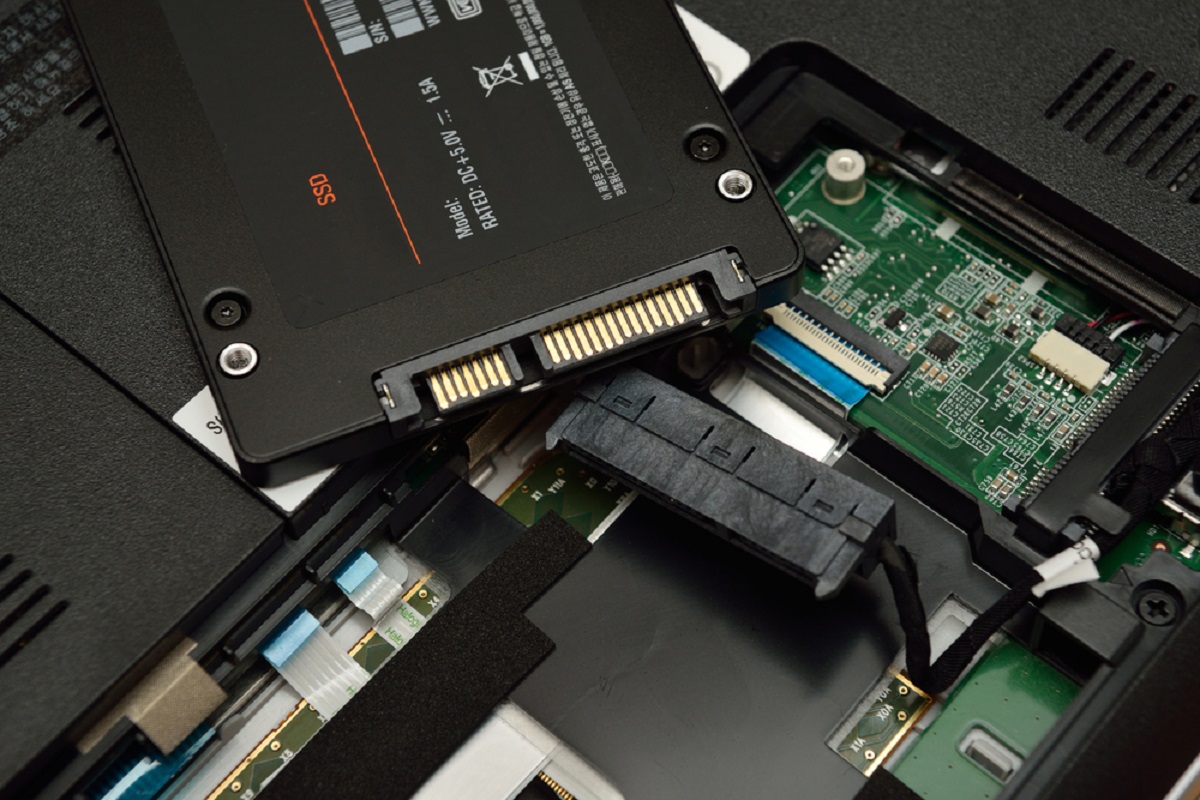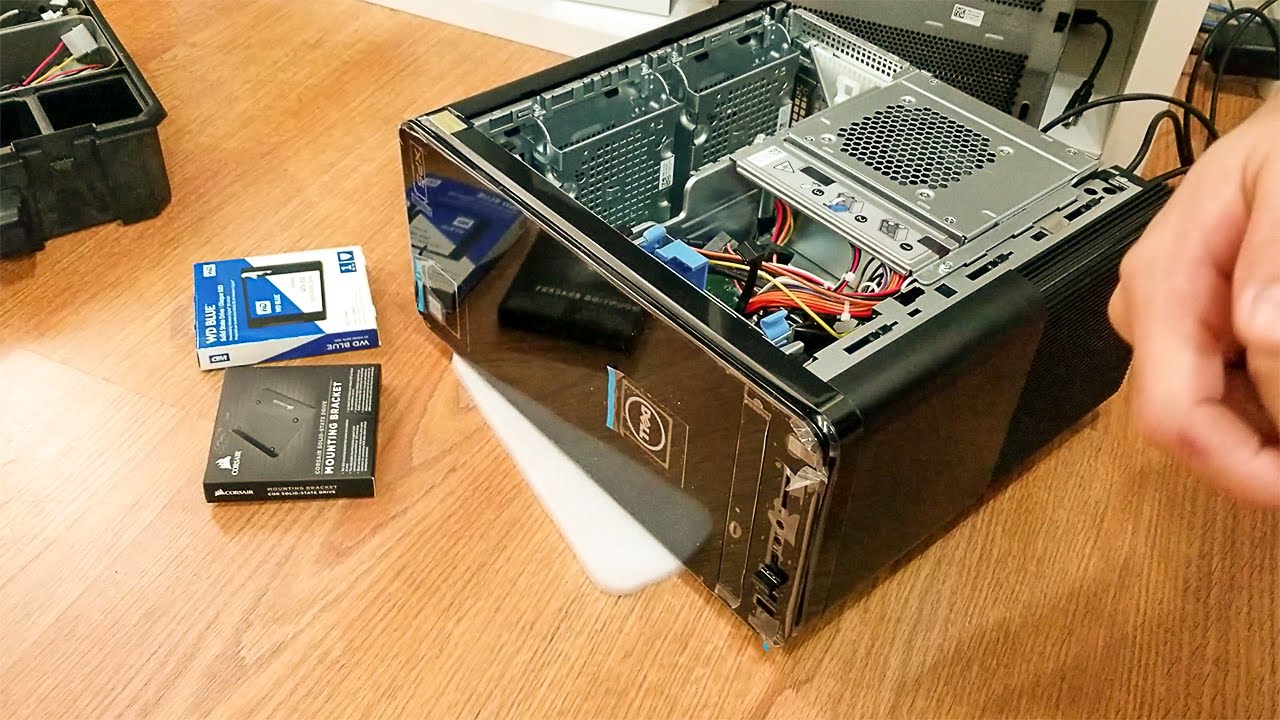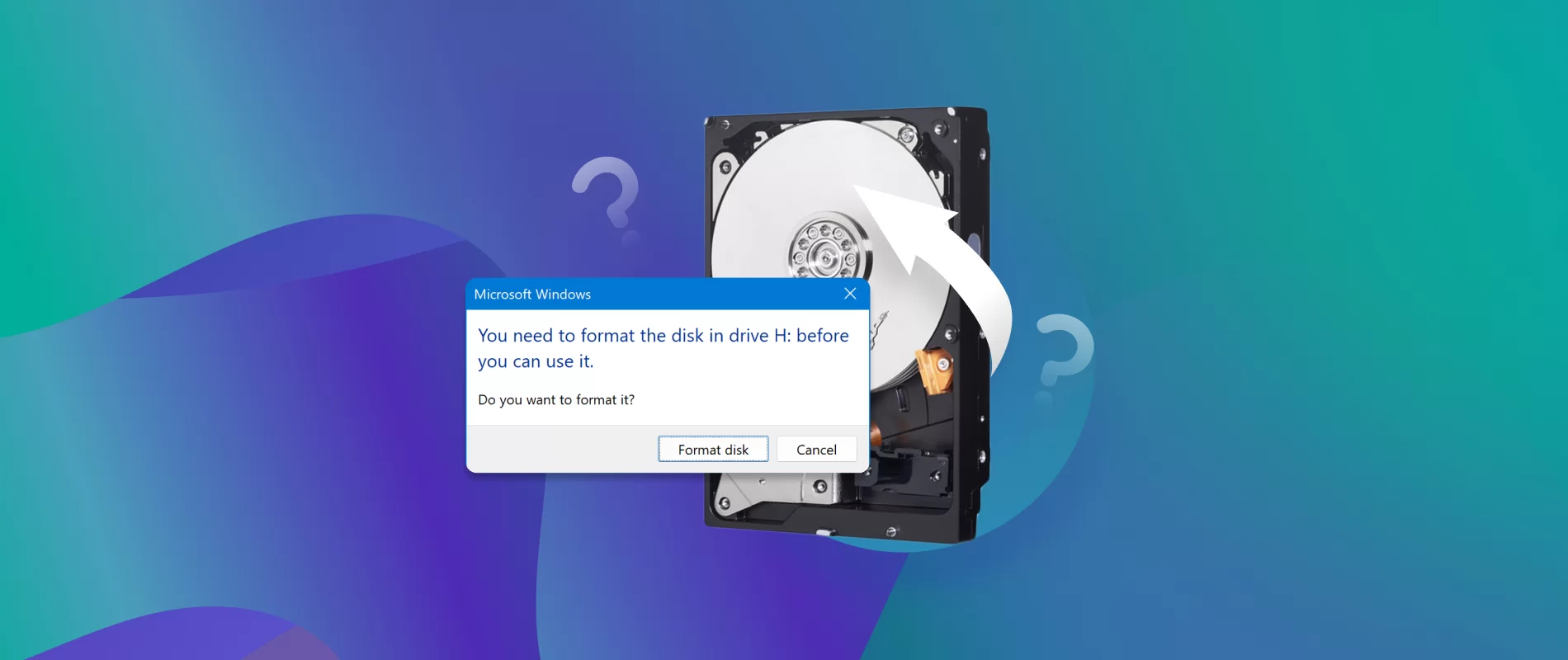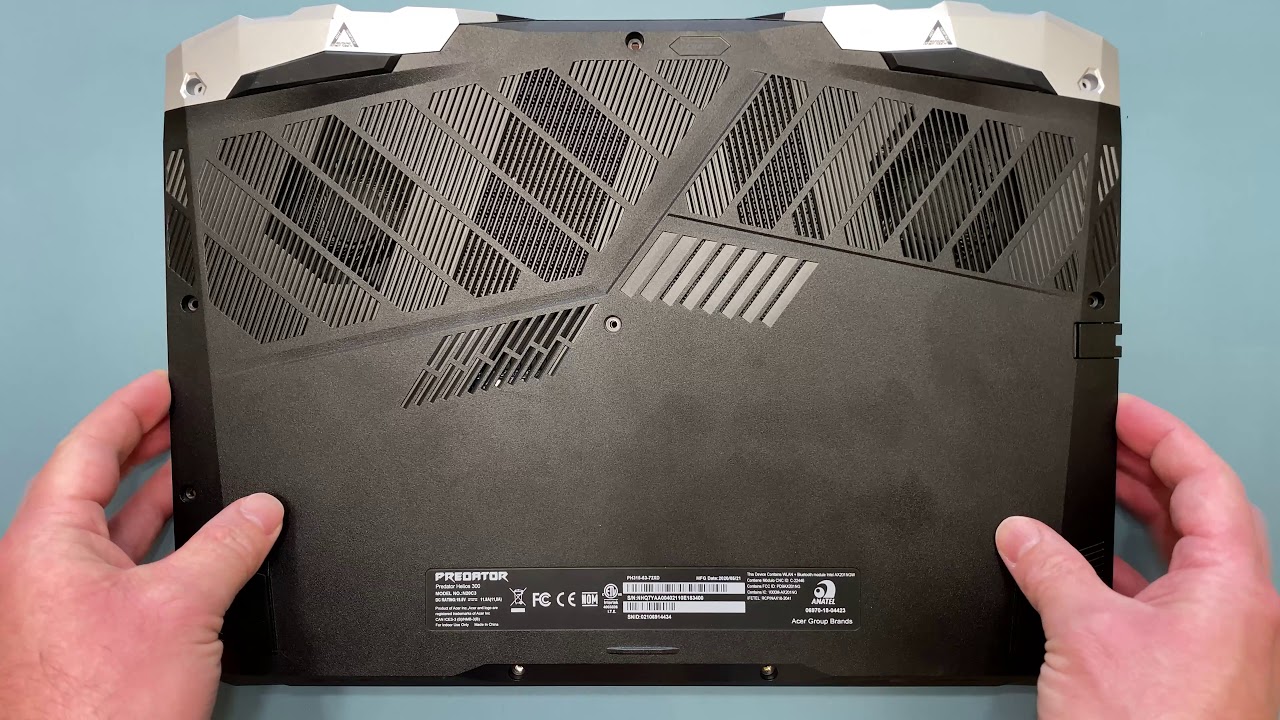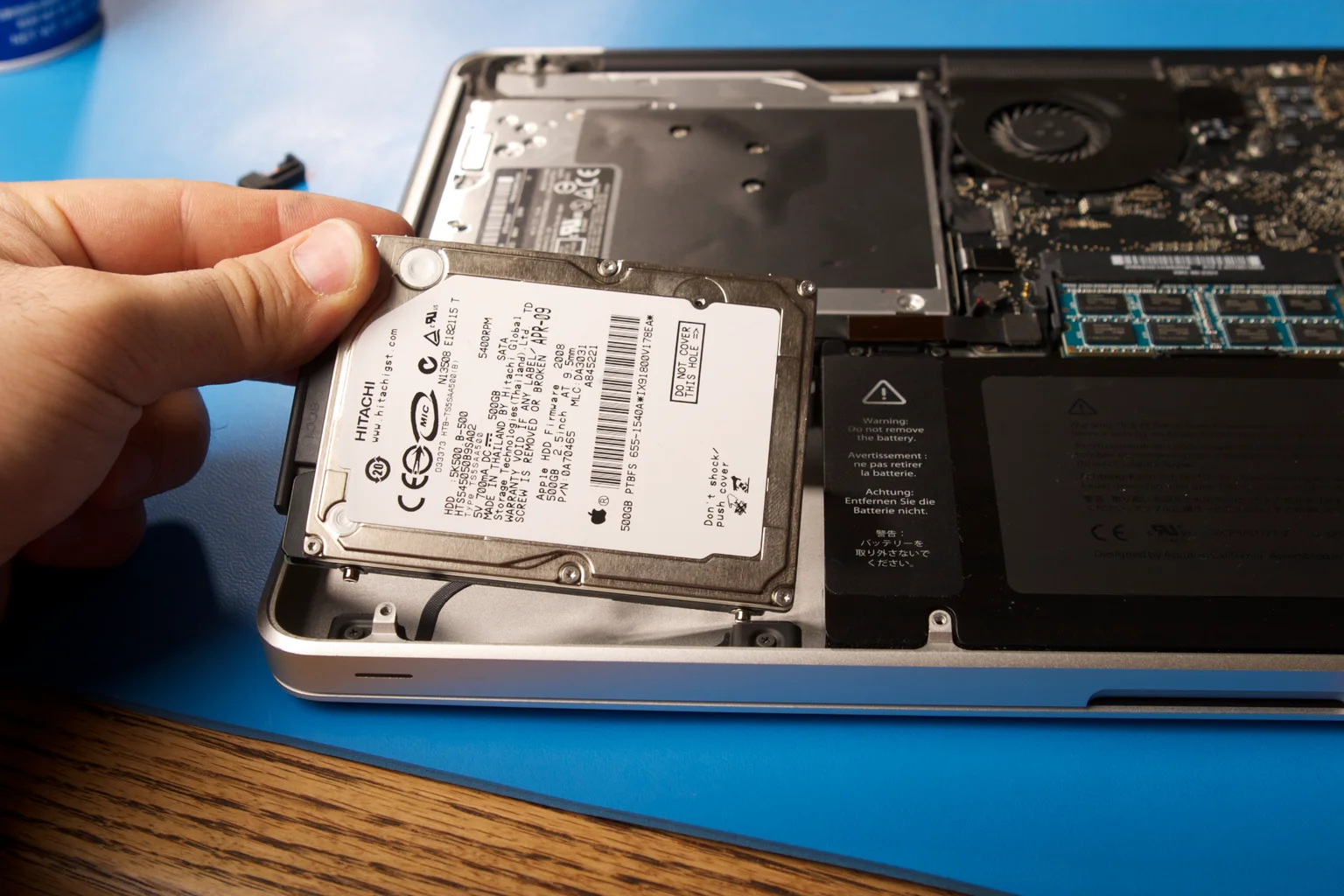Introduction
Welcome to the world of computer storage! If you’ve ever wondered what type of storage device your computer is equipped with, you’re not alone. Many computer users are uncertain about whether they have a hard drive or a solid state drive (SSD) in their systems. In this article, we will delve into the differences between these two types of storage devices, helping you identify which one you have.
In today’s digital age, data storage plays a pivotal role in our personal and professional lives. Whether it’s storing important documents, cherished memories in the form of photos and videos, or running applications smoothly, having the right storage device can significantly impact your computer’s performance.
Understanding the difference between a hard drive and a solid state drive is crucial for making informed decisions about upgrading your computer or troubleshooting any storage-related issues. Both of these storage options have their own unique advantages and limitations that you should be aware of.
Throughout this article, we will explore the physical and performance differences between hard drives and solid state drives. We will also guide you through various methods to identify which type of storage device your computer is equipped with. By the end of this article, you will have a clear understanding of the storage technology powering your computer.
So, without further ado, let’s dive into the exciting world of hard drives and solid state drives!
Understanding Hard Drives
Hard drives, also known as hard disk drives (HDDs), have been the traditional form of storage in computers for decades. They store data using magnetic storage technology, with a rapidly spinning disk called a platter and a mechanical arm known as the read/write head.
Hard drives are known for their large storage capacities, often ranging from hundreds of gigabytes to several terabytes. This makes them ideal for storing vast amounts of data such as documents, photos, videos, and applications. They are commonly found in desktop computers and laptops due to their affordability and high storage capacity.
One of the key advantages of hard drives is their relatively low cost per unit of storage. This affordability makes them a popular choice for users who require ample storage space but have budget constraints. Additionally, hard drives provide decent read and write speeds for everyday computing tasks.
However, hard drives have mechanical components, which make them more susceptible to physical wear and tear. The spinning platters and moving read/write heads can be vulnerable to shocks, vibrations, and even heat. These factors can lead to data loss or decreased performance over time.
Another factor to consider is power consumption. Hard drives require more power to operate compared to solid state drives. This can have an impact on the overall energy consumption of your computer and may result in reduced battery life for laptops.
In terms of noise, hard drives are typically noisier than solid state drives due to the spinning platters and moving mechanical parts. However, with advancements in technology, newer hard drives are designed to be quieter compared to older models.
In summary, hard drives are the traditional form of computer storage, offering large storage capacities at affordable prices. They are best suited for users who require vast amounts of storage space and are willing to sacrifice some performance and durability.
Understanding Solid State Drives
Solid state drives (SSDs) are a newer form of computer storage that have gained significant popularity in recent years. Unlike hard drives, SSDs do not have any moving parts. Instead, they use NAND flash memory, which allows for faster data access and improved durability.
One of the key advantages of SSDs is their lightning-fast performance. They offer significantly faster read and write speeds compared to hard drives, resulting in faster boot times, application launches, and file transfers. This makes SSDs particularly beneficial for tasks that require quick data access, such as gaming and video editing.
Another advantage of SSDs is their durability. Since there are no moving parts, SSDs are more resistant to shocks, vibrations, and physical damage. This makes them a reliable choice for portable devices like laptops, where data integrity and device longevity are crucial.
In addition to speed and durability, SSDs offer significant power efficiency benefits. They consume less power compared to hard drives, meaning they can contribute to longer battery life for laptops or lower energy consumption for desktop computers. This makes them ideal for users who prioritize energy efficiency.
However, there are a few considerations to keep in mind when it comes to SSDs. Firstly, they usually come with a higher price tag per unit of storage compared to hard drives. This can make them less affordable for those who require large storage capacities.
While SSDs have come a long way in terms of storage capacity, they still typically offer smaller storage sizes compared to hard drives. This means that if you need multiple terabytes of storage, a hard drive might be a more cost-effective option.
Finally, it’s worth noting that SSDs have a limited number of write cycles, meaning they can only be written to a certain number of times before they may start to degrade. However, modern SSDs have significantly improved lifespan and come equipped with wear-leveling algorithms to distribute data evenly across memory cells, mitigating this issue.
In summary, solid state drives are a more modern form of storage that offer incredible performance, durability, and power efficiency. They are especially beneficial for users who require fast data access and value the reliability of a drive with no moving parts.
Physical Differences
When it comes to physical differences, hard drives and solid state drives have distinct characteristics that set them apart.
Hard drives consist of a rigid metallic casing that houses one or more spinning platters and a mechanical arm with read/write heads. The platters are coated with a magnetic material, and data is stored on them in binary form using magnetization.
On the other hand, solid state drives have a compact and lightweight design. They are typically made of a plastic or metal casing that houses NAND flash memory chips, a controller, and other components. Unlike hard drives, there are no moving parts in SSDs. Instead, data is stored on memory chips using electrical signals.
The physical differences between these two storage devices also affect their size and weight. Hard drives are generally larger and heavier due to the mechanical components they contain. SSDs, being more compact and without any moving parts, are significantly smaller and lighter. This makes SSDs ideal for devices with strict size and weight limitations, such as ultrabooks and tablets.
Another difference is the noise produced during operation. Hard drives emit audible noise due to the spinning platters and moving mechanical components. In contrast, SSDs operate silently, as there are no moving parts that generate noise. This can be particularly advantageous for users who value a quiet computing environment.
In terms of physical durability, SSDs have an advantage over hard drives. The absence of moving parts makes SSDs more resistant to physical shocks and vibrations, reducing the risk of data loss due to accidental drops or impacts. Hard drives, with their delicate mechanical components, are more susceptible to damage and data loss in such situations.
It’s important to note that while hard drives are traditionally available in standard sizes, such as 2.5-inch or 3.5-inch form factors, solid state drives come in a variety of form factors including the standard sizes as well as smaller M.2 and PCIe cards. This allows SSDs to be easily integrated into different types of devices, providing flexibility and compatibility.
In summary, the physical differences between hard drives and solid state drives are significant. Hard drives have larger, bulkier designs with moving parts, while SSDs have compact, lightweight designs with no moving parts. SSDs also offer advantages in terms of silence, durability, and flexibility in form factors.
Performance Differences
When it comes to performance, solid state drives (SSDs) and hard drives differ significantly in terms of speed, responsiveness, and overall efficiency.
SSDs are known for their blazing-fast read and write speeds. Due to their use of NAND flash memory and lack of moving parts, SSDs can access data almost instantaneously. This results in significantly reduced boot times, faster application launches, and quicker data transfer speeds. Tasks such as file copying, video editing, and gaming are notably smoother and more efficient on SSDs.
In contrast, hard drives (HDDs) rely on spinning platters and mechanical arms to access data, which inherently introduces mechanical delays. Consequently, read and write speeds of hard drives tend to be slower compared to SSDs. While hard drives are still capable of handling most everyday computing tasks, they may be notably slower when it comes to data-intensive operations.
Another performance-related advantage of SSDs is their ability to handle multiple read and write operations simultaneously. This is due to their parallel architecture and lack of mechanical components. SSDs excel in multitasking scenarios, providing consistent performance even under heavy workloads.
Hard drives, on the other hand, may struggle to maintain performance in situations where multiple read and write operations are occurring simultaneously. The mechanical nature of hard drives introduces mechanical latency, which can impact overall system responsiveness.
In terms of power efficiency, SSDs outshine hard drives. SSDs consume significantly less power during both idle and active states. This not only contributes to energy savings but also extends battery life in laptops and other portable devices. In contrast, hard drives require more power to run their spinning platters and mechanical parts, resulting in higher energy consumption.
Additionally, the durability of SSDs enhances their performance over the long term. As there are no moving parts, SSDs are better equipped to handle shocks, vibrations, and physical impact. They are less prone to mechanical failures, data loss, and deterioration in performance. Hard drives, with their mechanical components, are more susceptible to damage and may experience decreased performance or complete failure if subjected to rough handling.
It’s important to note that while SSDs offer superior speed and efficiency, hard drives still excel in terms of storage capacity. Hard drives typically provide larger storage capacities at a more affordable price per unit. So, if you require a massive amount of storage without necessarily needing the fastest speeds, a hard drive may still be a viable option.
In summary, the performance differences between SSDs and hard drives are substantial. SSDs offer lightning-fast read/write speeds, superior multitasking capabilities, lower power consumption, and greater long-term durability. Hard drives, while slower and less power-efficient, excel in providing larger storage capacities at a more budget-friendly price.
Checking Your Computer’s Specifications
If you’re unsure whether your computer is equipped with a hard drive or a solid state drive, there are several methods you can use to check the storage device’s specifications.
One of the simplest ways to find this information is to check your computer’s documentation. Whether it’s the user manual or the specifications sheet, these documents often provide details about the storage device installed in your computer.
If you can’t find the documentation, another method is to access your computer’s system information. In Windows, you can do this by pressing the Windows key + R to open the Run dialog box, then typing “msinfo32” and hitting Enter. This will open the System Information window, where you can find information about various hardware components, including the storage device.
Another method specific to Windows is to check the Device Manager. You can access the Device Manager by right-clicking on the Start button and selecting “Device Manager” from the menu. In the Device Manager window, expand the “Disk drives” category to see the storage devices installed on your computer. The name of the device should give you an indication of whether it’s a hard drive or a solid state drive.
If you’re comfortable opening your computer’s casing, you can physically inspect the storage device. Hard drives are usually larger, rectangular-shaped devices with visible spinning platters and a mechanical arm. Solid state drives, on the other hand, are smaller, typically rectangular or square-shaped devices with no moving parts.
It’s important to note that if you’re not confident in your technical abilities, it’s best to consult a professional or refer to your computer’s documentation for accurate information.
By using these methods, you can identify whether your computer is equipped with a hard drive or a solid state drive, providing valuable insight into the storage technology powering your system.
Using System Information
System Information is a built-in utility in Windows that provides detailed information about various components and configurations of your computer, including the storage device. You can use this tool to determine whether your computer has a hard drive or a solid state drive.
To access System Information, press the Windows key + R to open the Run dialog box. Type “msinfo32” and hit Enter. This will open the System Information window, where you can find a wealth of information about your computer’s hardware and software.
In the System Information window, navigate to the “Components” section in the left panel and expand it. Look for and click on the “Storage” category. In the right panel, you will see a list of all storage devices installed on your computer.
The information displayed will include the device name, manufacturer, model, storage capacity, and type. You can easily determine whether your storage device is a hard drive or a solid state drive based on the information provided.
If the device name or model includes terms like “SSD,” “Solid State Drive,” or “Flash Storage,” it indicates that you have an SSD. On the other hand, if the device name or model refers to “HDD” or “Hard Disk Drive,” it signifies that you have a hard drive.
Using System Information is a reliable and convenient method to check your computer’s specifications, including the type of storage device it has. However, it’s important to note that this method may vary slightly depending on the version of Windows you are using.
In summary, by accessing System Information on your Windows computer, you can easily find out whether your system is equipped with a hard drive or a solid state drive. It’s a quick and straightforward method that provides valuable insight into your computer’s storage configuration.
Checking Device Manager
Device Manager is a Windows utility that allows you to view and manage the hardware devices installed on your computer. By accessing Device Manager, you can determine whether your computer has a hard drive or a solid state drive.
To open Device Manager, right-click on the Start button and select “Device Manager” from the menu that appears. Alternatively, you can press the Windows key + X and choose “Device Manager” from the list.
In the Device Manager window, you will see a list of hardware categories and devices installed on your computer. Look for the “Disk drives” category and expand it by clicking on the arrow next to it. This category contains all the storage devices connected to your computer.
You will see the names of all the storage devices, such as hard drives and solid state drives, listed under “Disk drives.” The name of the device can provide insights into its type. SSDs are often labeled with terms like “SSD” or “Solid State Drive.” On the other hand, hard drives are typically indicated by terms like “HDD” or “Hard Disk Drive.”
By examining the device names listed in the Disk drives category, you can easily identify whether your computer is equipped with a hard drive or a solid state drive.
It’s important to note that sometimes the device name might not explicitly mention whether it is an SSD or an HDD. In such cases, a quick internet search using the device model or manufacturer information can help you determine the device type.
Device Manager provides a straightforward way to identify the storage devices installed in your computer. It allows you to view the device names and their corresponding categories, enabling you to distinguish between hard drives and solid state drives.
Remember that the steps to access Device Manager may vary slightly depending on the version of Windows you are using. Additionally, if you are unsure about using Device Manager or interpreting the device names, it’s recommended to consult the documentation that accompanied your computer or seek assistance from a knowledgeable professional.
Opening Your Computer’s Casing
If you are comfortable working with computer hardware and want to physically inspect the storage device in your computer, you can consider opening your computer’s casing. This method allows you to directly observe the storage device and determine whether it is a hard drive or a solid state drive.
Before proceeding, it’s important to note that opening your computer’s casing requires caution and proper knowledge of handling computer components. If you’re unsure or not confident in your technical abilities, it’s best to seek assistance from a professional.
Here are the general steps to open your computer’s casing:
1. Shut down your computer: Ensure that your computer is completely powered off before proceeding with any hardware modifications.
2. Safety precautions: Ground yourself by touching a metal surface or using an anti-static wrist strap. This helps protect sensitive components from damage due to static electricity.
3. Unplug power and peripherals: Disconnect the power cable from the back of your computer. Remove any other peripherals such as keyboards, mice, and USB devices that may interfere with the casing removal process.
4. Remove screws or latches: The method to open your computer’s casing may vary depending on the model. Typically, you will need a screwdriver to remove screws securing the side panel. Some cases may have latches or sliding mechanisms that allow for easier access.
5. Slide or remove the side panel: Once the screws or latches are removed, gently slide or remove the side panel. Be cautious of any cables or wires that may be connected to the panel and set it aside in a safe place.
6. Locate the storage device: Look for the storage compartment within your computer. It is usually located near the front or middle of the casing. The storage device will be secured in a mounting bracket or slot.
7. Identify the storage device: Observe the physical characteristics of the device. Solid state drives are typically smaller and lighter, with no moving parts. Hard drives, on the other hand, are larger and heavier, featuring spinning platters and a mechanical arm.
8. Put everything back together: Once you have identified the storage device, carefully put the side panel back on and secure any screws or latches. Reconnect the power cable and peripherals to your computer.
By opening your computer’s casing, you can physically inspect the storage device and determine whether it is a hard drive or a solid state drive. Remember to exercise caution and follow proper procedures to avoid damaging any components.
If you’re unsure about opening the casing or interpreting the physical characteristics of the storage device, it’s best to consult the documentation that came with your computer or seek guidance from a knowledgeable professional.
Conclusion
Understanding whether your computer is equipped with a hard drive or a solid state drive is essential for troubleshooting storage-related issues, making informed upgrade decisions, and maximizing your computer’s performance. In this article, we have explored the physical and performance differences between hard drives and solid state drives.
Hard drives, with their spinning platters and mechanical arms, provide large storage capacities at affordable prices. They are reliable options for users who require ample storage space and are tolerant of slightly slower speeds and lower durability.
On the other hand, solid state drives, without any moving parts, offer lightning-fast read and write speeds, improved multitasking capabilities, and better power efficiency. They are ideal for users who prioritize speed, responsiveness, and durability, even though they may come with a higher price per unit of storage.
Throughout the article, we have discussed various methods to identify the type of storage device in your computer. From checking system information to using Device Manager and even physically inspecting the components by opening the computer’s casing, these methods can help you determine whether your computer houses a hard drive or a solid state drive.
Remember to exercise caution and seek professional assistance if you are unsure about performing any physical modifications to your computer. The safety of your computer and its components should always be a top priority.
By understanding the storage technology powering your computer, you can make informed decisions about upgrades or troubleshoot any performance issues. Whether it’s the large storage capacities of hard drives or the lightning-fast speeds and enhanced durability of solid state drives, knowing the type of storage device in your computer is crucial for optimizing your computing experience.
So, now armed with the knowledge you’ve gained, go ahead and explore the world of computer storage with confidence!







